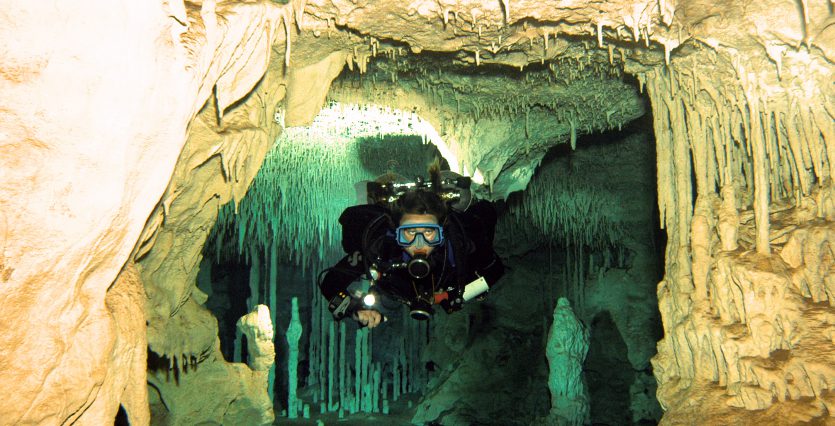
Crystal clear water with underground passages that stretch for miles forming maze-like structures that open up into huge breathtaking chambers! This is the underwater playground of cave divers all over the world. But cave diving is often viewed by many divers, even some instructors, as one of the so-called “dark arts” of scuba diving. Insurance companies consider cave diving one of the most dangerous sports to participate in, and some places around the world have completely banned it due to the perceived risks. You might ask yourself, is cave diving really worth it? If this question is directed towards me, my answer is a resounding, “Yes, it absolutely is.” So allow me to attempt to explain to you why.
Just to be clear, no one and especially no cave divers worth their salt will ever deny the added risks in cave diving compared to traditional recreational diving. During a typical cave dive, a diver may be in a narrow underwater passage, breathing from a limited gas supply, in total darkness (only the illumination from your canister light), and with no direct ascent to the surface. All this while controlling your breathing, maintaining near perfect buoyancy and trim, and utilizing very specific finning techniques in order not to disturb the fine silt often found on cave floors. If at this stage of your reading, it seems like I am trying to deter you from cave diving, this is not the case at all. I do, however, want to impress upon everyone the need to obtain proper, specialized training before thinking of venturing into a cave.
So why become a cave diver when it has such a stigma attached to it. Some divers start because of the thrill of exploring a dive site few people will ever get to see; others are fascinated by the stalagmites, stalactites and other rock formations found in flooded cave systems. Cave diving has the ability to feed and satisfy that intrepid explorer feeling that is found in every scuba diver during dives.
To obtain the required training, it is highly recommended that one consult with a local NAUI cave instructor to discuss registering into the next appropriate course. NAUI offers a range of courses that will train divers along their way to becoming a competent and proficient cave diver. These courses include:
- NAUI Cavern Diver
- NAUI Cave Diver I
- NAUI Cave Diver II
- NAUI Cave Guide
In addition to these courses, NAUI also now offers Mine Diver Level I and II courses for divers wishing to get specialized training for diving in underwater mining environments.

During a NAUI Cave course, students are introduced to a wide variety of advanced knowledge topics and challenged to develop their existing water skills to the elevated level required to safely execute a dive in an overhead environment. Long before heading into a cave, students are expected to demonstrate proficiency in the use of spools/reels, light handling, team roles, line placement, and zero visibility/touch contact communications while following a guideline.
One of the main reasons I personally love teaching cave diving is that everyone in the course will learn something, improve diving skills and push personal boundaries in a safe training environment. From seasoned technical instructors to the beginner technical student, each one usually leaves the course with a great sense of accomplishment, having achieved a higher level of diving proficiency.
So next time you (or one of your students) feels a desire to expand diving horizons and don’t exactly know in what direction to progress, take a good look at cave diving, get proper instruction and give it a try. You might be surprised to find just how much you like it and all its possibilities while taking your diving skills to a level you had not imagined.


